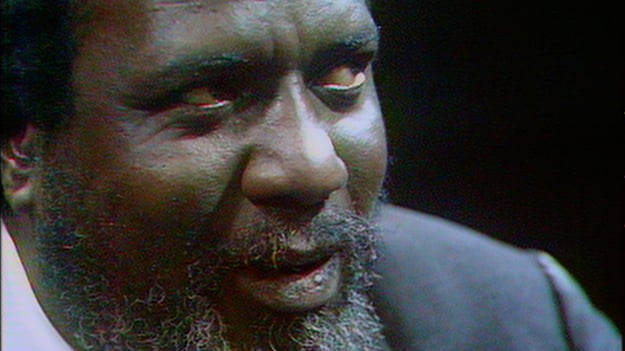Film Comment Recommends: Rewind & Play
This article appeared in the March 9, 2023 edition of The Film Comment Letter, our free weekly newsletter featuring original film criticism and writing. Sign up for the Letter here.

Rewind & Play (Alain Gomis, 2022)
Alain Gomis’s archival reassemblage is a compact work of cinematic archeology. Reworking outtakes from a 1969 French television documentary about the legendary jazz composer Thelonious Monk, Rewind & Play captures, with lacerating clarity, both the irrepressible and boundary-breaking genius of the musician and the knee-jerk racism to which he was constantly subjected. Gomis’s edit is a surgical dissection of the power dynamics between those behind the camera and those in front of it: the film cuts between extreme close-ups of Monk, in Paris to close out a European tour, and the fussing, hectic efforts of the film crew as they follow him through the city. When we see Monk peeling a hard-boiled egg at a bar and trying to relax, the camera feels like an intruder.
The bulk of Rewind & Play is made up of footage from an interview by the French jazz musician and TV personality Henri Renaud. As Monk sits at a grand piano, Renaud looms awkwardly over him, puffing smoke into his face and asking for retake after retake when his exhausted interviewee doesn’t abide by the image of an affable and offbeat Black genius that the producers are trying to project. When Renaud asks him what he remembers about his first concert in France in 1954, Monk describes his anger at being paid less than his white fellow performers. Renaud asks for a retake that is less “denigrating.” When Renaud relates an anecdote about visiting the pianist and his family in their tiny New York apartment, emphasizing Monk’s seeming eccentricity for placing a grand piano in the kitchen, the musician quietly responds that the piano was in the kitchen because that was the only room it would fit in. Just as in his music, Monk makes masterful use of silence. The subject’s stoic half-smile becomes a mirror reflecting back the prejudice and patronizing liberalism of a production that treats the great man as a prop to be manipulated and exploited for its own spectacle.
Rewind & Play also makes palpable the violence of the camera itself—in a shot that Gomis returns to throughout the film, the lens seems to almost brush against Monk’s cheek, as beads of sweat run down his face under the studio lights. He appears to be alternately enraged and drained by the whole thing, and only seems at ease during a series of extended performances in the film’s final third. In these scenes, the effortless brilliance of Monk’s music renders the sanctimonious pestering of those around him even more clumsy and banal. Gomis stitches together close-ups of Monk’s face with images of his rapidly dancing hands, capturing an artist in total concentration, each note an ecstatic—and tragically brief—moment of freedom.







